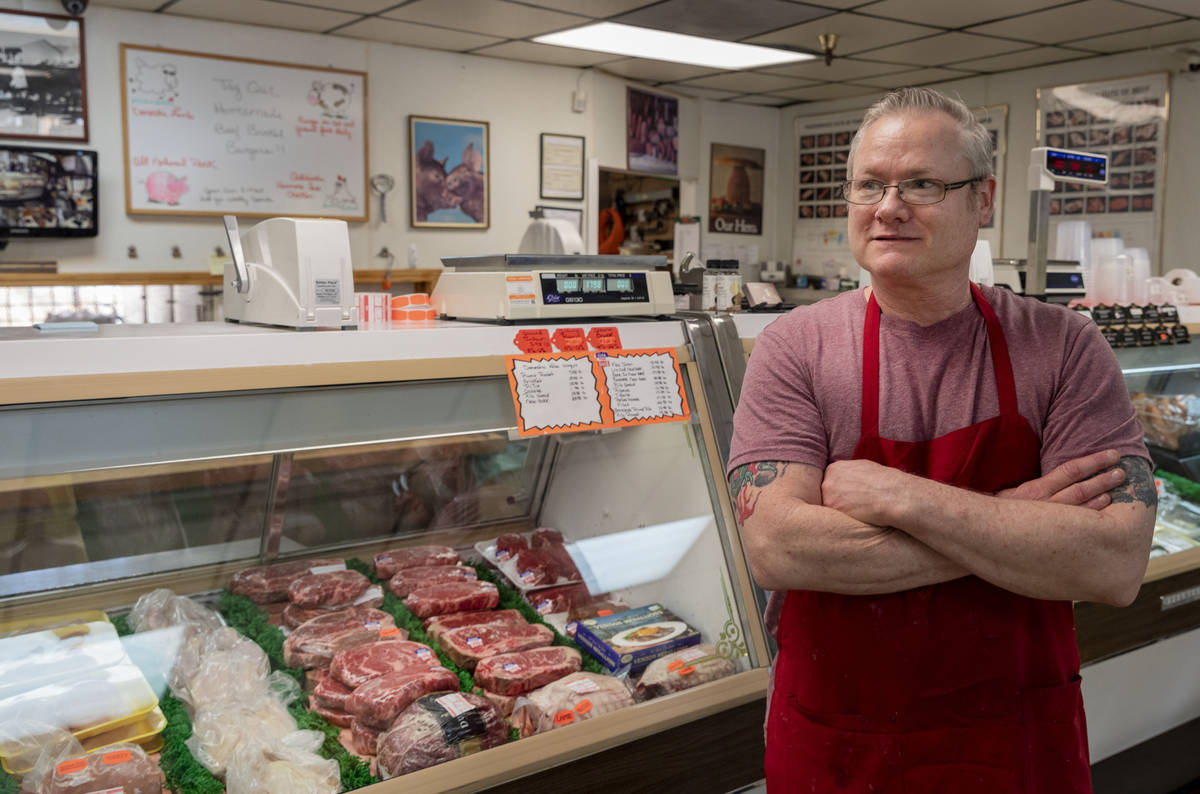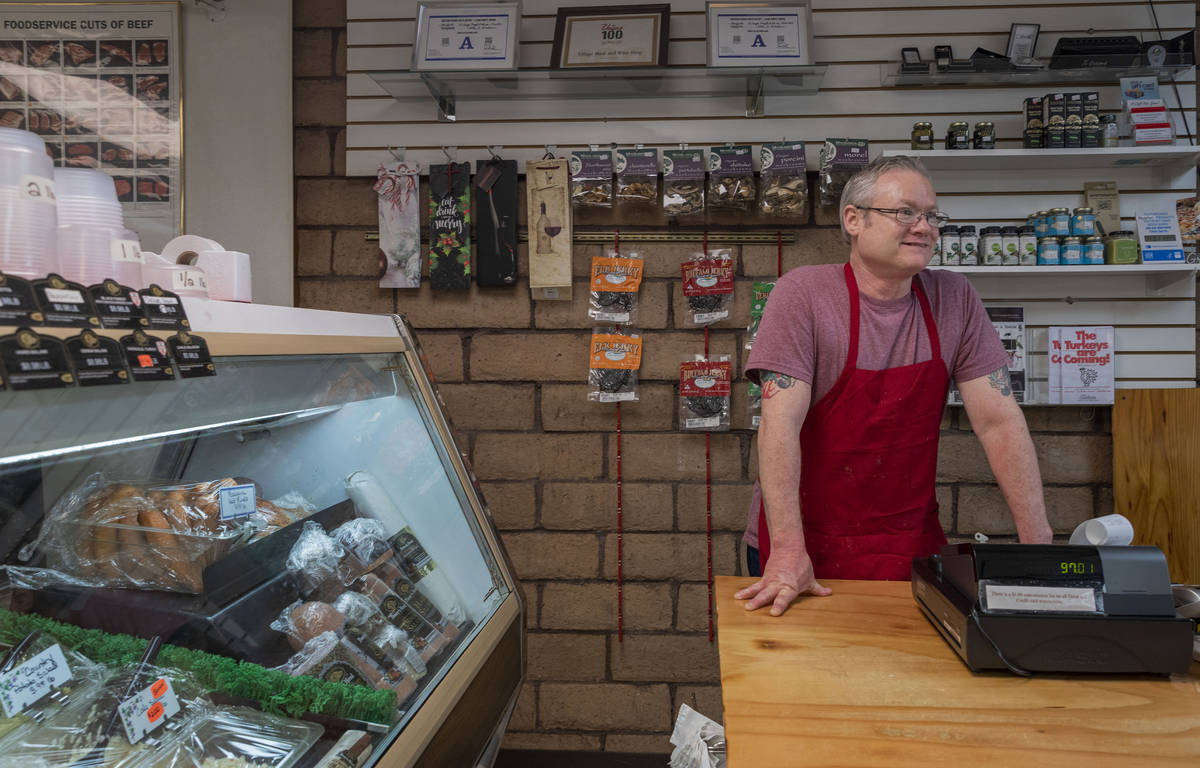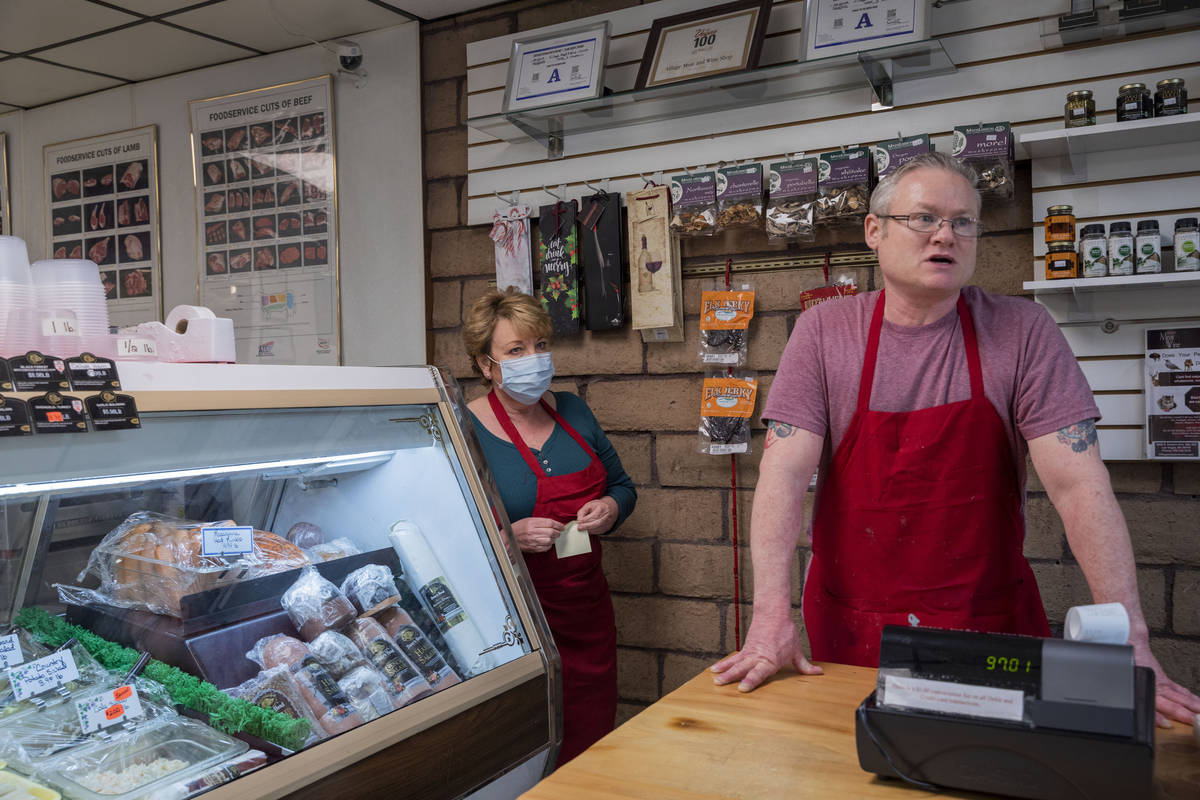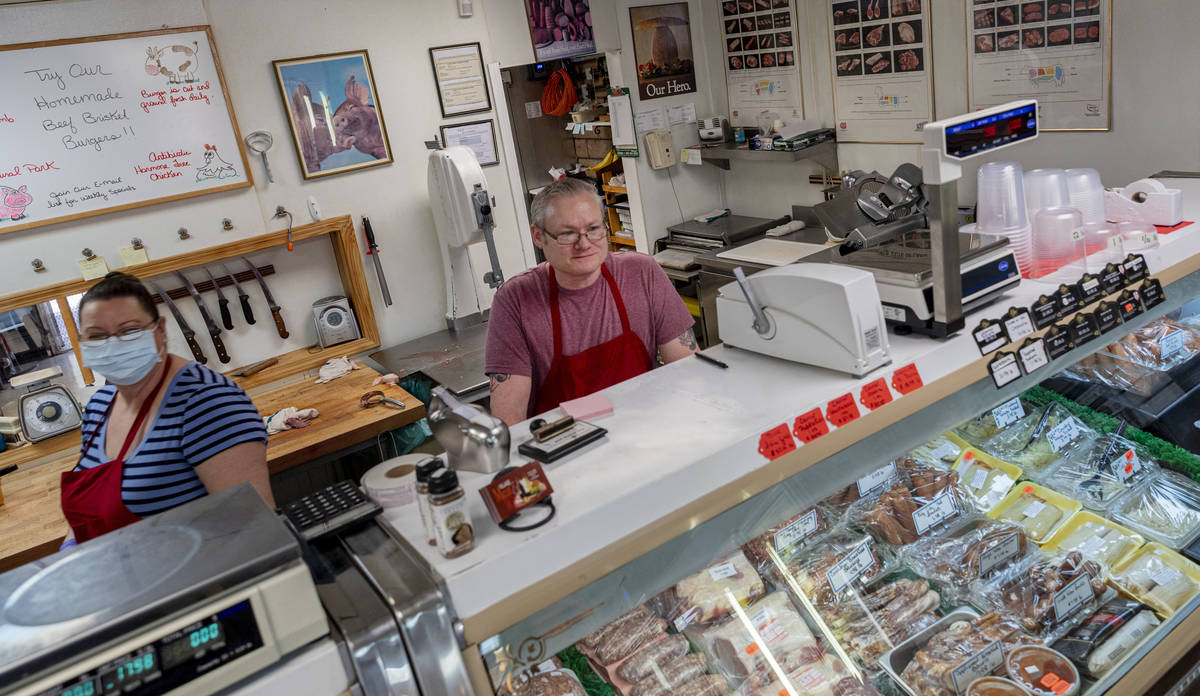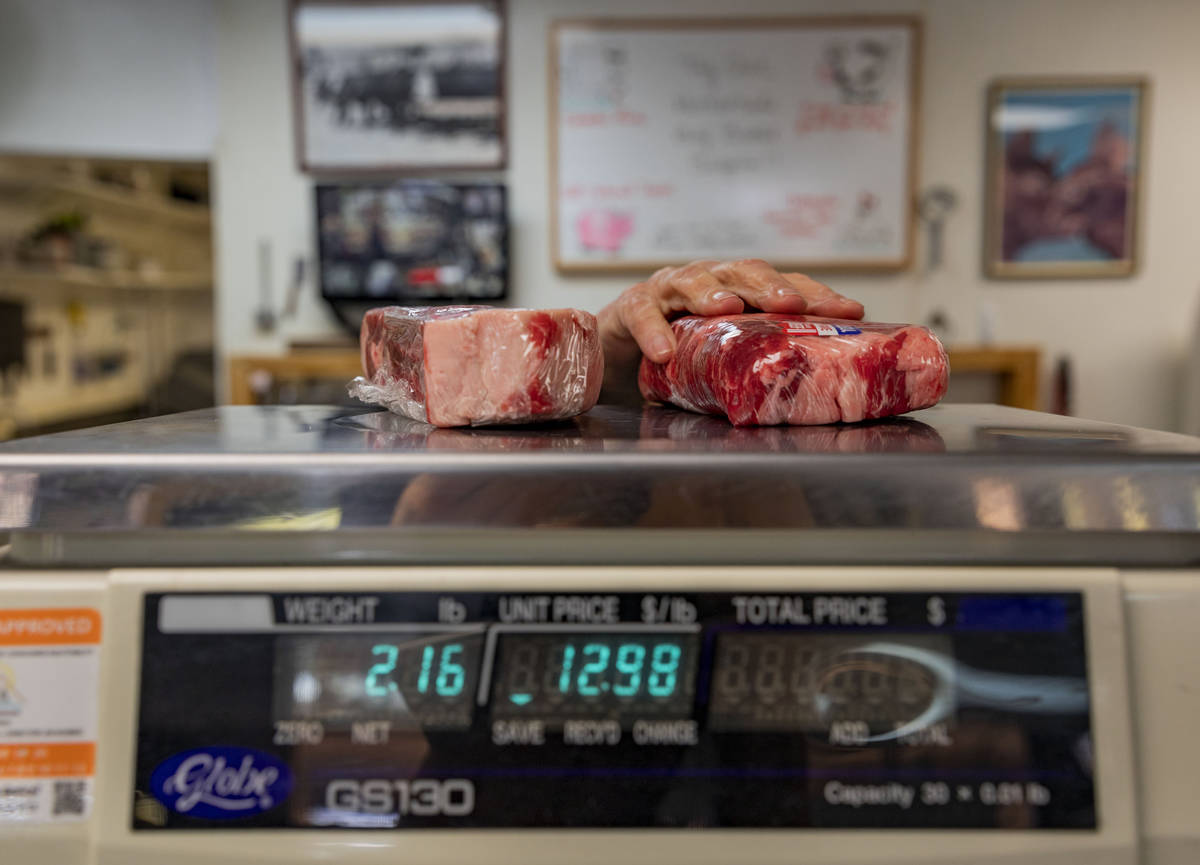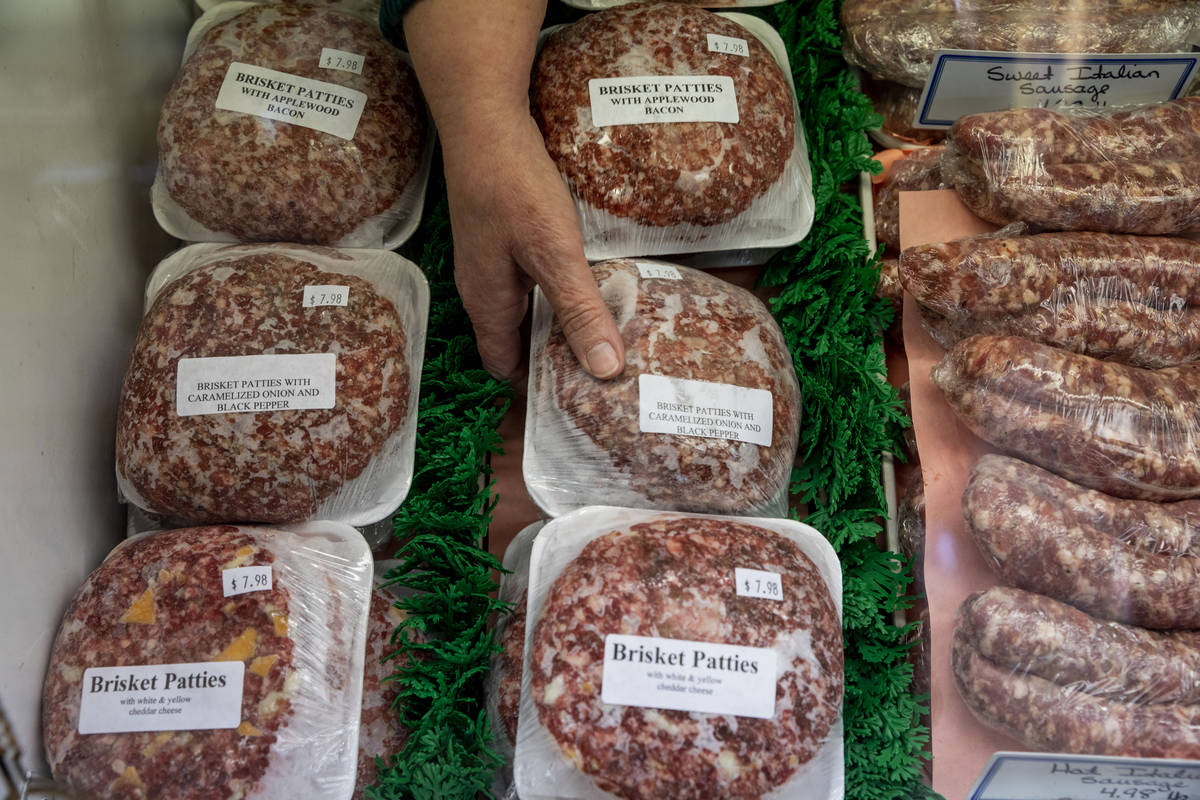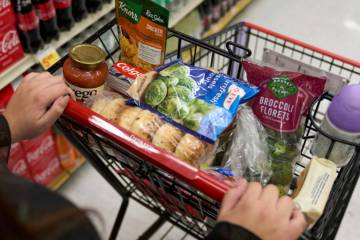Supply, demand changes make meat prices a moving target
Tim Jensen has been on the other end of coronavirus panic-buying. The owner of Village Meat & Wine arrived at his Eastern Avenue shop on the morning of March 17 to find a line of customers extending well past the door.
It was a Tuesday. On the previous Sunday, Gov. Steve Sisolak had signed an order closing Nevada schools. The threat of the pandemic was getting real, and since Jensen’s shop is closed on Mondays, customers came out on Tuesday in force.
There were so many — some buying as much as 40 pounds of ground meat — that he and his wife, Chemaine, had to close from 11 a.m. to 2 p.m. just so Jensen could catch up cutting and grinding. They were there until after midnight preparing for the next day, and they recruited friends, family members and retired butchers to help.
Consumers “were told to stock up for a couple weeks,” Jensen said. “I think they thought a couple of months.”
About a month later, the buying frenzy has calmed as people have learned how to weather what may become a very protracted storm. But Jensen is left wondering what will happen with supplies and what his suppliers charge.
The closure of resorts and many restaurants has lowered demand, which should lower prices. But some meat distributors closed or curtailed their schedules because of less demand, and plants have begun to close because of virus outbreaks, reducing the supply, which might cause prices to rise.
If you’re starting to get confused, just wait.
50 million parts
“There’s only about 50 million parts to this puzzle,” said Kevin Good, vice president of industry relations and analysis for CattleFax, a research and analysis firm in Centennial, Colorado. “Nobody knows the right answer.”
David P. Anderson, a livestock economist and a professor and extension economist at Texas A&M University, said panic-buying raised prices at the supermarket level. The stores order six weeks in advance, he said, so the demand caught them off guard.
“Grocery stores had a stampede of people buying everything in sight,” Anderson said. “They had planned for their purchases. All of a sudden they’ve got to jump back out into the spot market (where prices are higher) and buy.”
And a supermarket isn’t looking for the same cuts as a restaurant, where the choices lean toward the luxury side.
“Now we’ve got to cut up a carcass differently,” he said.
Stabilization in past two weeks
But meat prices have stabilized. In the past two weeks, Anderson said, wholesale rib-eyes have dropped from $8.32 to $5.79 a pound, while wholesale chuck has risen from $2.69 to $3.75 a pound as demand for cheaper cuts has grown.
“Steak items could be a value, but at the same time, what does the consumer know how to cook?” Good said. “What’s the consumer going to do if he hasn’t got a job?”
Pork bellies, the source of bacon, have dropped from $1.02 a pound wholesale to 50 cents, and chicken wings have dropped from $1.70 to 97 cents a pound.
“Huge amounts of bacon go through food service,” Anderson said. “And with no sports and no restaurants, what on earth is a wing worth? We don’t eat many wings at home.”
So retail prices will be coming down soon, right? Not exactly. Anderson said there’s no generalization of when changes in wholesale prices will hit the retail level.
“A common complaint of farmers is they don’t see retail prices change as fast and as far as farm-level prices,” Anderson said. “In this mess we’re in, so far there’s no incentive for grocery stores to cut prices or run a special to get people in the store.”
Plant closings also could restrict the supply, said Dr. Paul Aho, an economist and owner of Poultry Perspective in Storrs, Connecticut. “That’s kind of a wild card. That could make prices higher if it gets a lot worse.”
One source of comfort: The food supply is not likely to run out.
“Before this whole disaster hit,” Anderson said, “we were producing record amounts of beef, pork and chicken.”
Some items are in surplus, Aho said. “And you can see it in everything. There’s too many eggs now. Too much bacon. Lots of things there’s just too much of.”
Too many hogs is a concern for the the National Pork Producers Council, which has asked the federal government for help because the coronavirus has had a “sudden and devastating impact on U.S. hog farmers,” according to president Howard A.V. Roth. He added that the closure of processing plants and China’s “retaliatory tariffs” on U.S. pork have led to a backup of hogs on farms. Producers fear many may be driven out of business, which could cut the supply further.
“I won’t speculate on what’s in the future and what’s going to happen at the grocery store,” Roth said. “Keeping the processing plants open and keeping the backlog of pigs flowing is extremely important.”
“We are,” Aho said, “in uncharted waters.”
Contact Heidi Knapp Rinella at hrinella@reviewjournal.com or 702-383-0474. Follow @HKRinella on Twitter.



